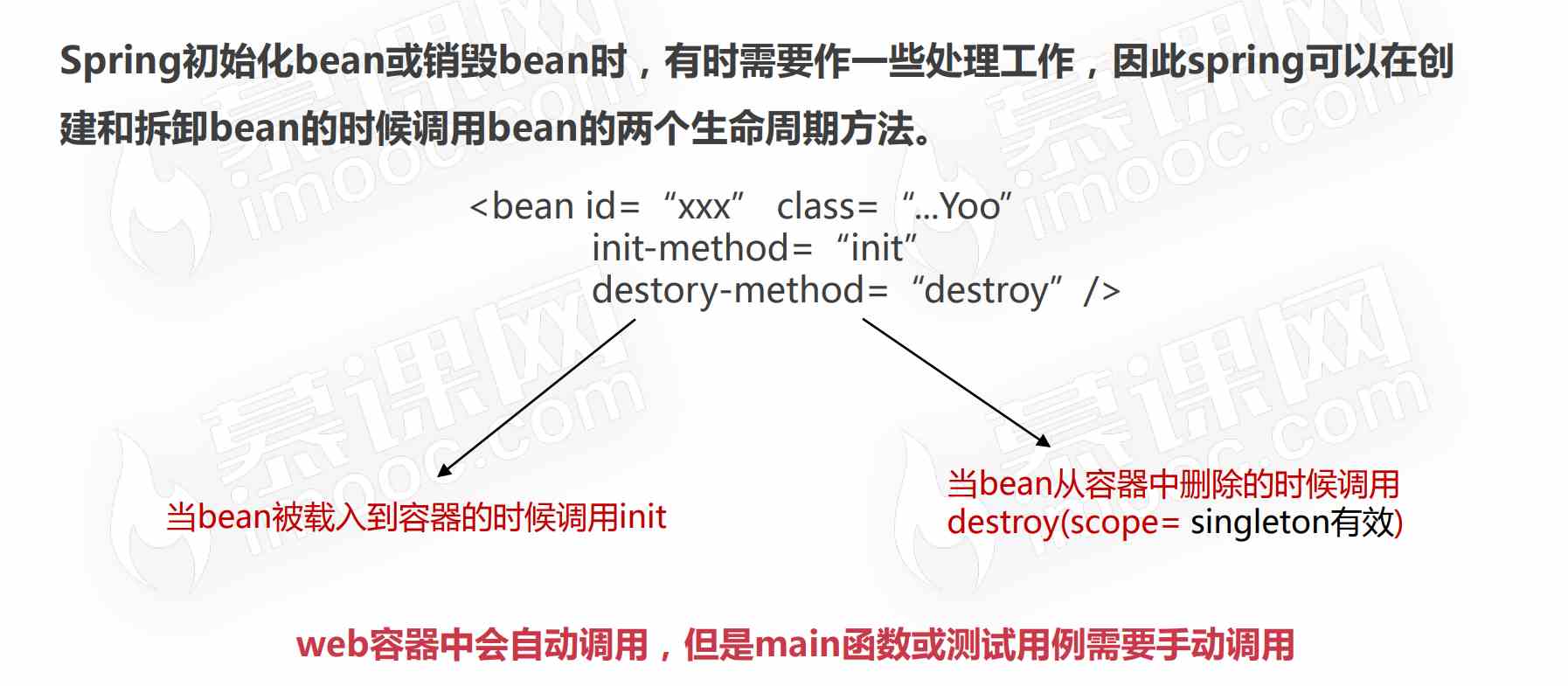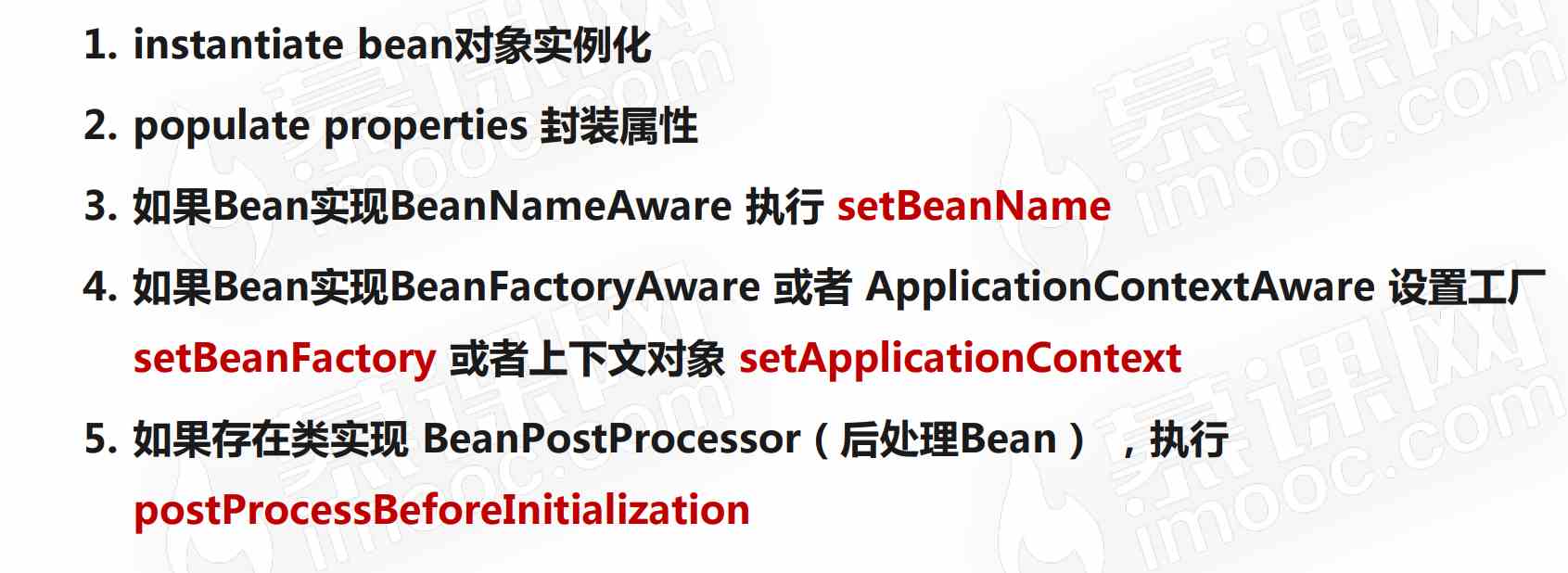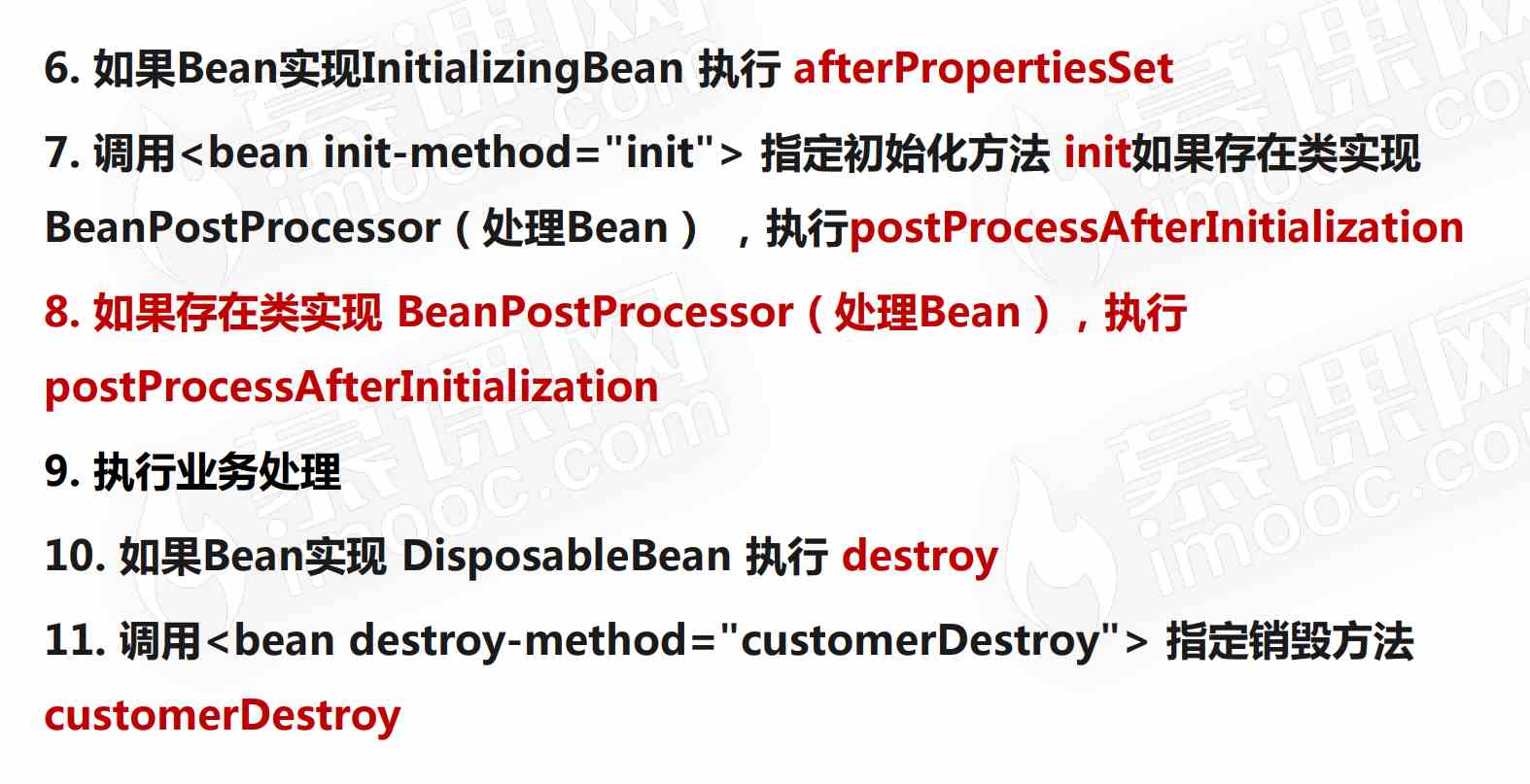您好,登录后才能下订单哦!
这篇文章将为大家详细讲解有关怎么在SPRING中管理XML,文章内容质量较高,因此小编分享给大家做个参考,希望大家阅读完这篇文章后对相关知识有一定的了解。
1.有三种实例化方式(无参构造,静态工厂,实例工厂),最常用的还是无参构造的方式
2.bean标签中常用的属性
id/name:唯一标识名称,两者作用一样,只是name中可以包含特殊字符
class:类的完全路径名
scope:bean的作用域 singleton :单例 (默认) prototype:每getBean创建一个新的 (常用) request session (不常用)
一般都默认为singleton ,当整合struts2时,它的action是多例的,它要交给spring去管理,所以用多例
init-method:当bean被载入容器中时调用
destroy-method:当bean从容器中删除时调用 (scope=prototype时有效)
(init-method和destroy-method在web容器中会自动调用,但是main函数或测试用例需要手动调用)

3.bean的生命周期


package com.pheony.demo2;
import org.springframework.beans.BeansException;
import org.springframework.beans.factory.BeanNameAware;
import org.springframework.beans.factory.DisposableBean;
import org.springframework.beans.factory.InitializingBean;
import org.springframework.context.ApplicationContext;
import org.springframework.context.ApplicationContextAware;
public class Food implements BeanNameAware,ApplicationContextAware,InitializingBean,DisposableBean {
public Food(){
System.out.println("第一步,利用构造方法实例化啦");
}
private String name; //食品名称
public void setName(String name) {
System.out.println("第二步,设置属性啦");
this.name = name;
}
public String getName() {
return name;
}
@Override
public void setBeanName(String s) {
System.out.println("第三步,设置bean的名称啦");
}
@Override
public void setApplicationContext(ApplicationContext applicationContext) throws BeansException {
System.out.println("第四步,了解工厂信息啦");
}
@Override
public void afterPropertiesSet() throws Exception {
System.out.println("第六步,属性设置后啦");
}
public void setup(){
System.out.println("第七步,初始化啦");
}
public void run(){
System.out.println("第九步,执行自身业务方法啦");
}
@Override
public void destroy() throws Exception {
System.out.println("第十步,执行spring的销毁方法啦");
}
public void setdown(){
System.out.println("第十一步,执行自身销毁方法啦");
}
}package com.pheony.demo2;
import org.springframework.beans.BeansException;
import org.springframework.beans.factory.config.BeanPostProcessor;
/**
* 后处理bean,很关键,AOP就是利用这个实现的
*/
public class MyBeanPostProcessor implements BeanPostProcessor {
@Override
public Object postProcessBeforeInitialization(Object o, String s) throws BeansException {
System.out.println("第五步,初始化前方法来啦");
return o;
}
@Override
public Object postProcessAfterInitialization(Object o, String s) throws BeansException {
System.out.println("第八步,初始化后方法来啦");
return o;
}
}<bean id="food" class="com.pheony.demo2.Food" scope="singleton" init-method="setup" destroy-method="setdown"> <!--在实体类中属性最好都加上set/get方法,DI根据set/get方法找到对应的属性--> <property name="name" value="香蕉"></property> </bean> <bean class="com.pheony.demo2.MyBeanPostProcessor"></bean>
package com.pheony.demo2;
import org.junit.Test;
import org.springframework.context.support.ClassPathXmlApplicationContext;
public class TestFood {
@Test
public void test1(){
ClassPathXmlApplicationContext ac = new ClassPathXmlApplicationContext("applicationContext.xml");
Food food = (Food)ac.getBean("food");
food.run();
ac.close();
}
}关于怎么在SPRING中管理XML就分享到这里了,希望以上内容可以对大家有一定的帮助,可以学到更多知识。如果觉得文章不错,可以把它分享出去让更多的人看到。
免责声明:本站发布的内容(图片、视频和文字)以原创、转载和分享为主,文章观点不代表本网站立场,如果涉及侵权请联系站长邮箱:is@yisu.com进行举报,并提供相关证据,一经查实,将立刻删除涉嫌侵权内容。